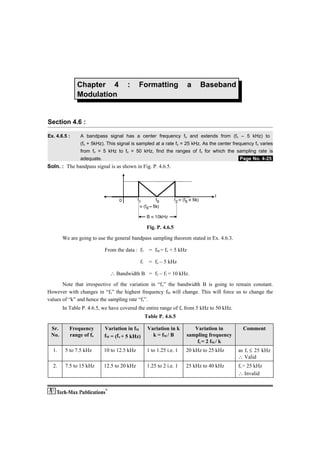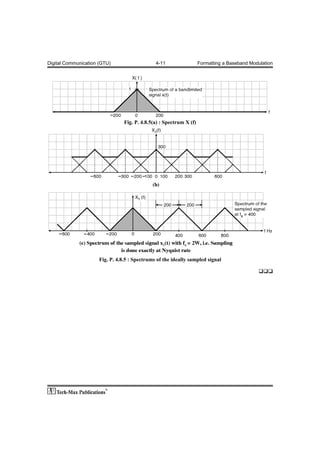The document contains details about sampling a bandpass signal with varying center frequency fo from 5 kHz to 50 kHz at a sampling rate of 25 kHz.
It analyzes the ranges of fo for which the sampling rate is adequate by calculating the variation in bandwidth (k) as fo changes. It concludes that the sampling rate of 25 kHz is adequate when fo is between 5-7.5 kHz, 15-20 kHz, 25-32.5 kHz, and 35-50 kHz.










